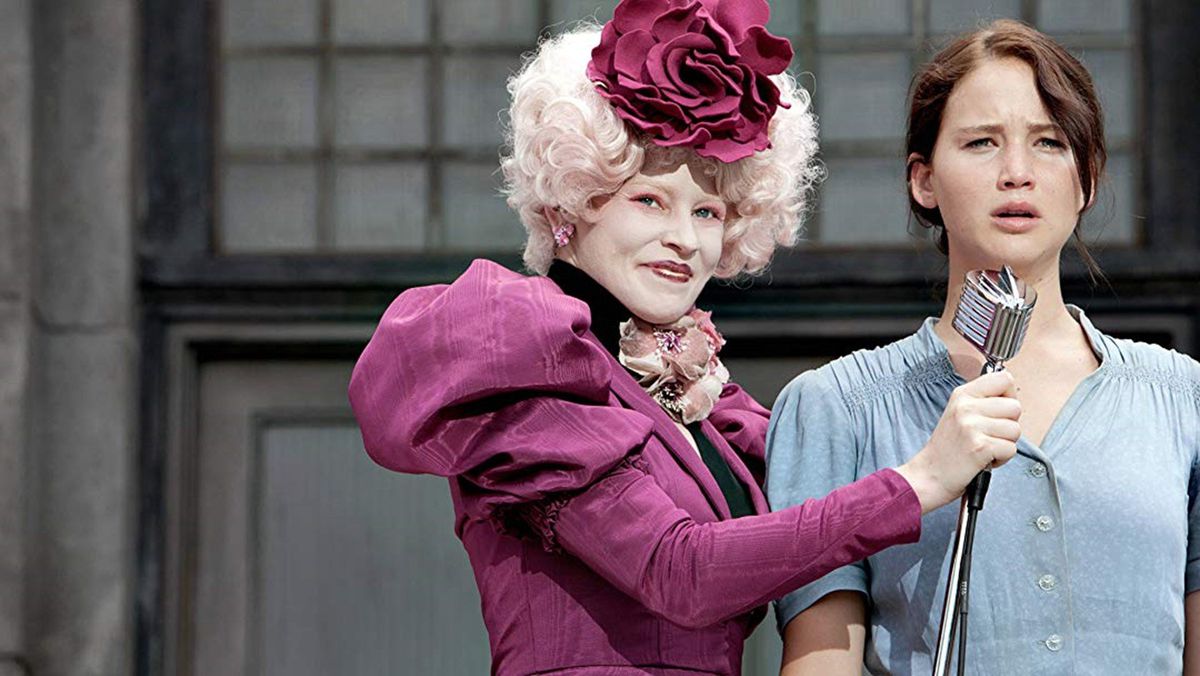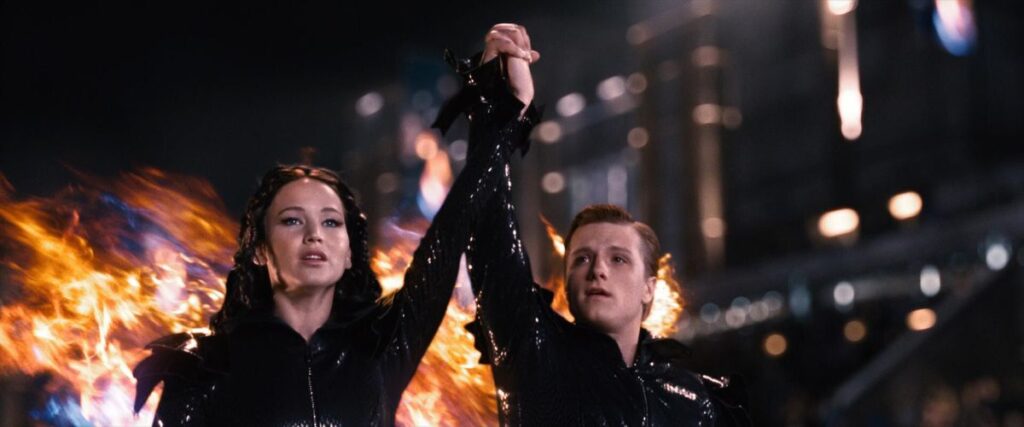The Hunger Games movies, based on the wildly successful young adult dystopian book series, dominated the box office in the 2010s. The three books (and four movies) shaped the landscape of YA literature for the next few years or so (for better or for worse), and while many imitators followed in their wake, none of them quite hit the highs and the sharp commentary of the OG franchise.
On the off chance you missed the cultural zeitgeist that was the YA dystopian wave of the early 2010s, you might not know your Catching Fires from your Mockingjays. As someone who was on the front lines and made it to at least one of the midnight premieres, I’ve put in the work and know the ropes. I did my time, and can impart the knowledge. With all the movies now on Netflix, it’s the right moment to remind people: What was the deal with The Hunger Games movies?
What is the Hunger Games franchise about?
Image: Lionsgate
The Hunger Games series takes place in the dystopian society of Panem, where rich elites reside in the Capitol and the rest of the country toils away to meet their needs. In order to keep the people down, every year the Capitol randomly selects 24 children (two from each of the 12 Districts) to battle to the death in a high-tech Arena. Each year brings a different Arena, designed after different ecosystems with different environmental challenges.
The books — and movies — kick off when a resilient archer from Panem’s poorest district named Katniss Everdeen volunteers to take the place of her little sister. From there, she finds herself battling for her life and somehow becoming the symbol of a rebellion that catches fire (ha) across the land.
What is the order of the movies?
For the most part, each movie corresponds to the book of the same name. However, there are four movies and only three books. Why? Well, back in the 2010s, there was a trend to split the mega-blockbuster conclusions of big sci-fi/fantasy young adult franchises into two movies to make more money. For some, like Harry Potter and the Deathly Hallows, this served to better tell the jam-packed story in the final installment (and also doubled the giant box-office returns). For others, like the Divergent series, this backfired horribly and the last movie just… never got made.
But anyway, once you know the names of the sequels, the order is pretty straightforward. It goes like this:
The Hunger Games

Photo: Lionsgate
The movie that kicks it all off. Played by Jennifer Lawrence, Katniss Everdeen, our reluctant heroine, volunteers to take the place of her little sister in the Games. She finds herself caught in a fabricated star-crossed-lovers narrative when her District partner Peeta (Josh Hutcherson) concocts an effective scheme to make the two of them more compelling to the Capitol citizens, giving them both a better chance to survive. The first movie makes heavy use of a shaky camera, something that the sequels got rid of (a good thing, because that shit gave me a headache).
Catching Fire
After accidentally inciting collective action against the ruling class across Panem, Katniss finds herself the target of dictatorial President Snow. This time, the Hunger Games contestants are plucked from the existing winner pool — so back to the Arena Katniss goes. However, there is a quiet rebellion brewing, and some of her opponents might be on her side. The Arena in Catching Fire is much cooler than the previous movie’s, and since not all of the tributes meet untimely deaths, they get more screen time and chances to shine (shout out to Sam Claflin’s terrible American accent in this one).
Mockingjay Part 1

Image: Lionsgate
This one picks up after Catching Fire, with Katniss now in the mysterious District 13 after being lifted out of the Arena. District 13 is fueling the rebellions across Panem, and the leader wants Katniss to become the “Mockingjay” — aka the symbol of the rebellion — in order to unite the rebels. Most of this movie focuses on Katniss getting used to this new position, especially since she absolutely never asked for it and just wanted to keep her sister safe. There are some cool things about propaganda, media, and war in here, but also if you’re in a pinch and you need a movie to skip over… you can probably pass on this one, since it’s just exposition.
Mockingjay Part 2
It all leads to this! Finally, the rebellion is in full swing. It is a brutal, unflinching finale that doesn’t have an entirely happy ending, but one that does make sense. Well, except for the weird end shot where Jennifer Lawrence tries to smile into the camera.
All the Hunger Games movies are available on Netflix.

